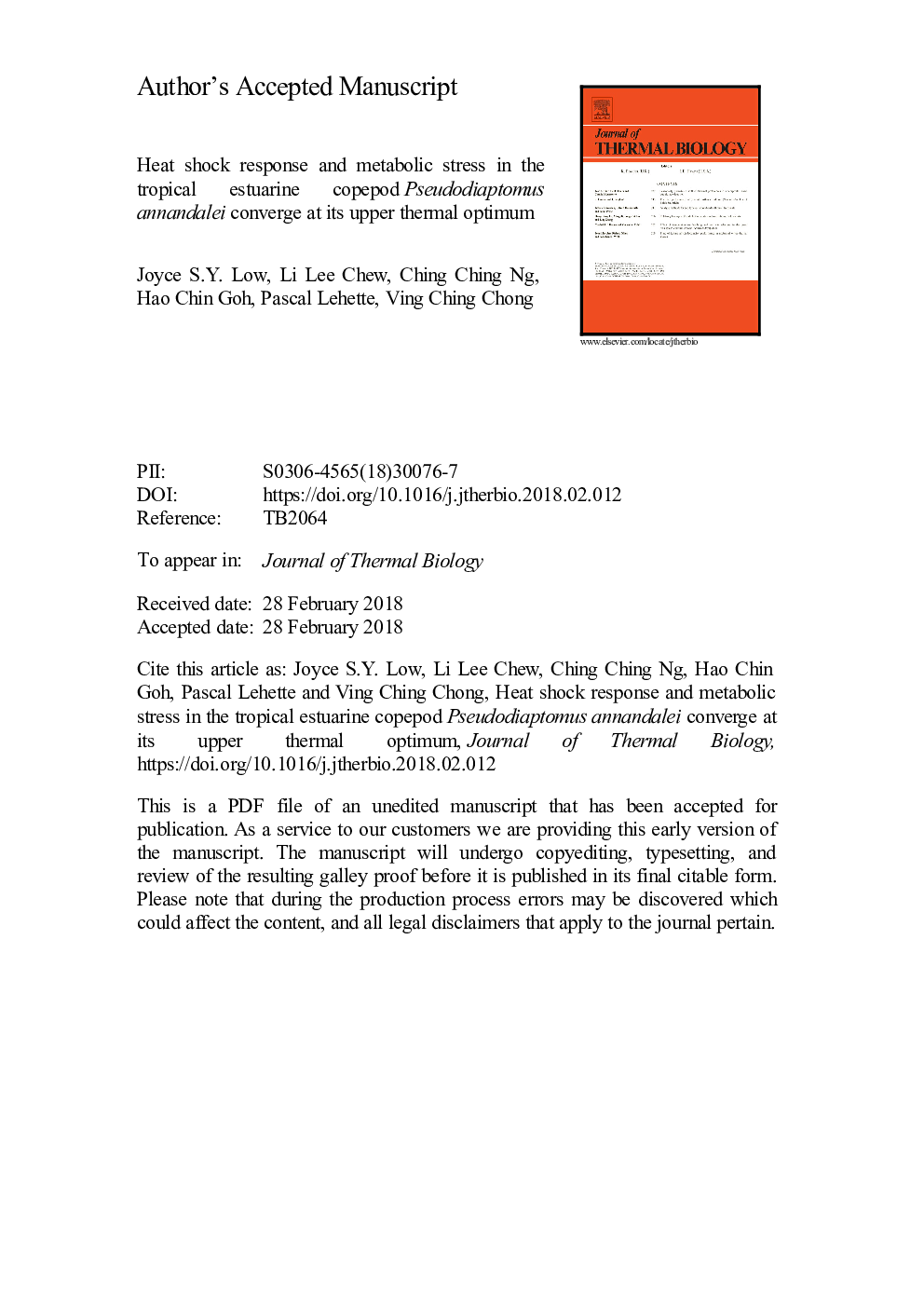| Article ID | Journal | Published Year | Pages | File Type |
|---|---|---|---|---|
| 8649991 | Journal of Thermal Biology | 2018 | 32 Pages |
Abstract
Heat shock response (HSR), in terms of transcription regulation of two heat shock proteins genes hsp70 and hsp90), was analysed in a widespread tropical copepod Pseudodiaptomus annandalei. The mRNA transcripts of both genes were quantified after copepods at a salinity of 20 underwent an acclimation process involving an initial acclimation temperature of 29â¯Â°C, followed by gradual thermal ramping to the target exposure temperature range of 24-36â¯Â°C. The respective cellular HSR and organismal metabolism, measured by respiratory activity at exposure temperatures, were compared. The fold change in mRNA expression for both hsp70 and hsp90 (8-9 fold) peaks at 32â¯Â°C, which is very close to 32.4â¯Â°C, the upper thermal optimum for respiration in the species. Unexpectedly, the modelled HSR curves peak at only 3â¯Â°C (hsp90) and 3.5â¯Â°C (hsp70) above the mean water temperature (29.32â¯Â°C) of the copepod in the field. We propose that copepods in tropical waters adopt a preparative HSR strategy, early at the upper limit of its thermal optimum, due to the narrow thermal range of its habitat thus precluding substantial energy demand at higher temperatures. However, the model suggests that the species could survive to at least 36â¯Â°C with short acclimation time. Nevertheless, the significant overlap between its thermal range of hsp synthesis and the narrow temperature range of its habitat also suggests that any unprecedented rise in sea temperature would have a detrimental effect on the species.
Related Topics
Life Sciences
Agricultural and Biological Sciences
Agricultural and Biological Sciences (General)
Authors
Joyce S.Y. Low, Li Lee Chew, Ching Ching Ng, Hao Chin Goh, Pascal Lehette, Ving Ching Chong,
